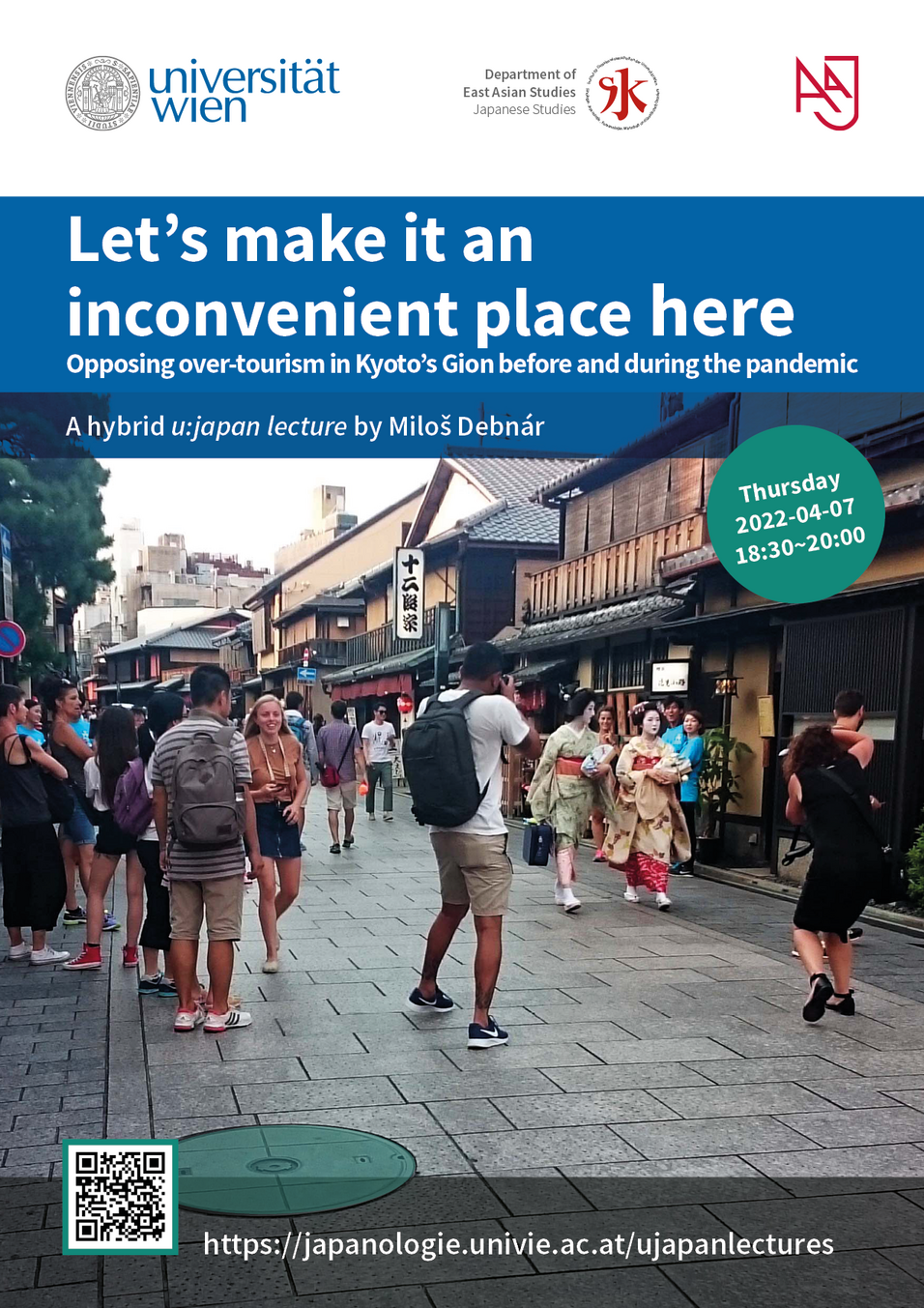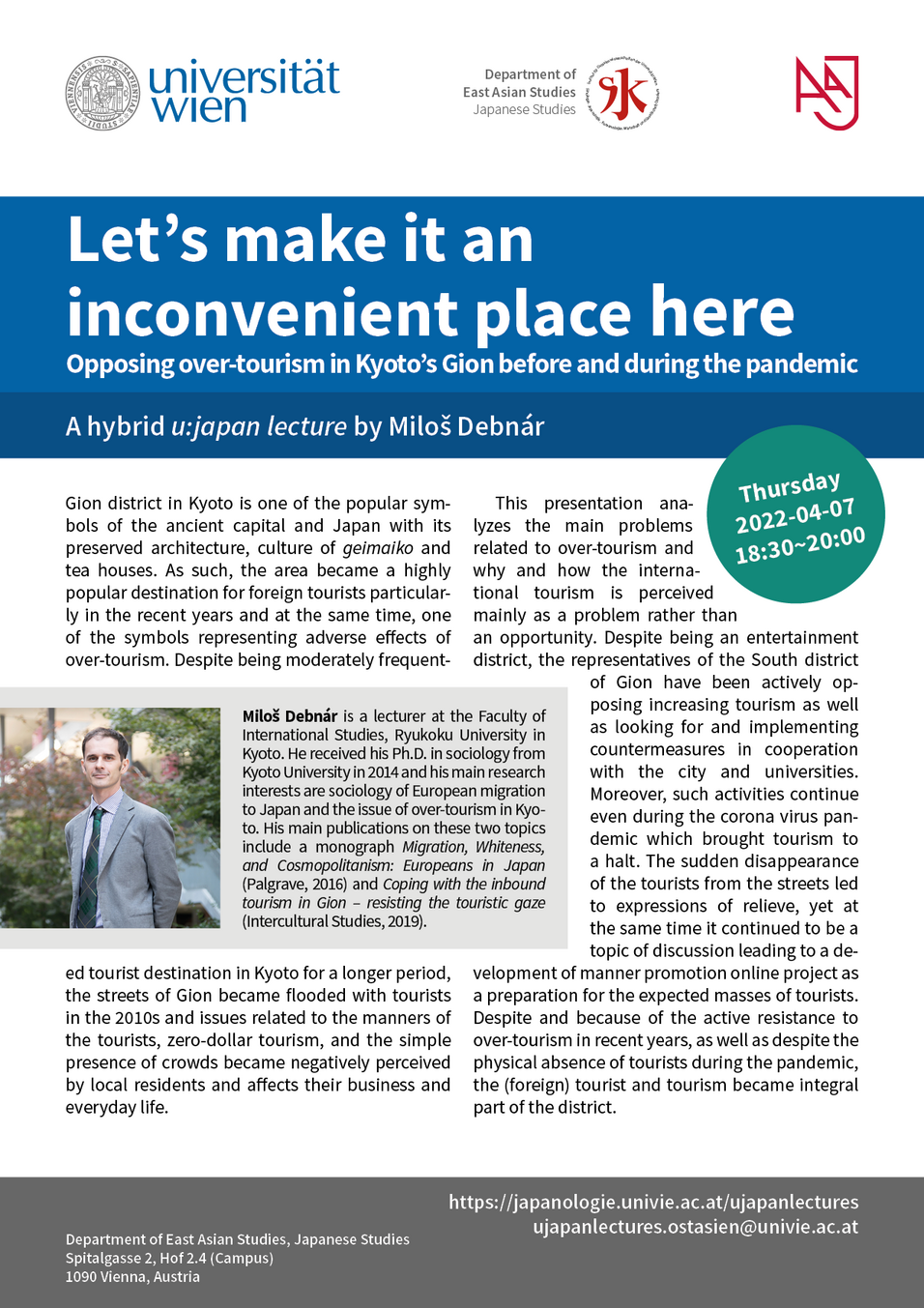| Abstract |
Gion district in Kyoto is one of the popular symbols of the ancient capital and Japan with its preserved architecture, culture of geimaiko and tea houses. As such, the area became a highly popular destination for foreign tourists particularly in the recent years and at the same time, one of the symbols representing adverse effects of over-tourism. Despite being moderately frequented tourist destination in Kyoto for a longer period, the streets of Gion became flooded with tourists in the 2010s and issues related to the manners of the tourists, zero-dollar tourism, and the simple presence of crowds became negatively perceived by local residents and affects their business and everyday life.
This presentation analyzes the main problems related to over-tourism and why and how the international tourism is perceived mainly as a problem rather than an opportunity. Despite being an entertainment district, the representatives of the South district of Gion have been actively opposing increasing tourism as well as looking for and implementing countermeasures in cooperation with the city and universities. Moreover, such activities continue even during the corona virus pandemic which brought tourism to a halt. The sudden disappearance of the tourists from the streets led to expressions of relieve, yet at the same time it continued to be a topic of discussion leading to a development of manner promotion online project as a preparation for the expected masses of tourists. Despite and because of the active resistance to over-tourism in recent years, as well as despite the physical absence of tourists during the pandemic, the (foreign) tourist and tourism became integral part of the district.
| Bio |
Miloš Debnár is a lecturer at the Faculty of International Studies, Ryukoku University in Kyoto. He received his Ph.D. in sociology from Kyoto University in 2014 and his main research interests are sociology of European migration to Japan and the issue of over-tourism in Kyoto. His main publications on these two topics include a monograph Migration, Whiteness, and Cosmopolitanism: Europeans in Japan (Palgrave, 2016) and Coping with the inbound tourism in Gion – resisting the touristic gaze (Intercultural Studies, 2019).
| Date & Time |
u:japan lecture | s04e05
Thursday 2022-04-07, 18:30~20:00
max. 50 participants (on site) + max. 300 participants (online)
| Place & Preparations |
- Please bare in mind, that strict CoVid-precautions are enforced, therefore bring and wear a FFP2-mask, and provide a proof that your are tested, recovered or vaccinated (3-G-Regel)
- Es gilt die 3G-Regel und eine FFP2-Maskenpflicht in geschlossenen Räumen.
Please visit these links for university's special and general information regarding the current restrictions.
| Plattform & Link |
... and STREAMED online
https://univienna.zoom.us/j/67959299306?pwd=TEhmT3RneEJoSmRaK2dMSDRISXJMUT09
Meeting-ID: 679 5929 9306 | PW: 092342
Instructions and Netiquette (in English and German)
How to join a lecture via Zoom Meeting (in English)
Frequently Asked Questions (in English)
| Further Questions? |
Please contact ujapanlectures.ostasien@univie.ac.at or visit https://japanologie.univie.ac.at/ujapanlectures/s04/#e05.


